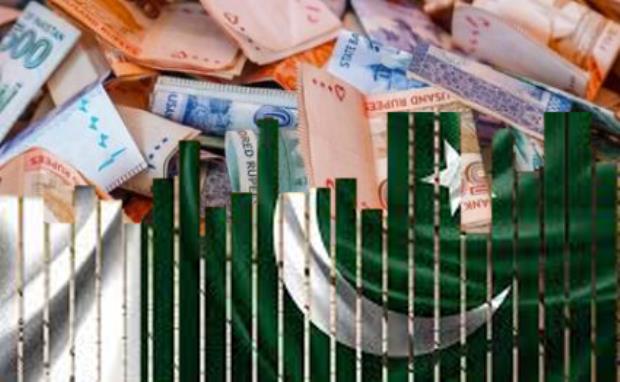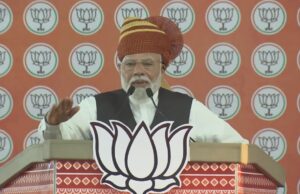Introduction
In the recent past, Pakistan has experienced a lot of external political intervention particularly through the United States Congress Resolution 901 and the alleged Operation Goldsmith. Although these actions are given in the name of democracy and human rights, they bring into question the real motives. It is therefore the intention of this article to demystify these political myths and focus on the tremendous progress that Pakistan has made in its march towards economic revival and growth in spite of such political stunts.
Analyzing the Reported Political Strategies
Resolution 901 sponsored by Richard McCormick in essence appears to be in support of democracy and human rights in Pakistan. However, the timing and goals of the operation indicate that it has a different purpose. FIA in Pakistan has stated that Operation Goldsmith is a part of a larger plan hatched by the Pakistan Tehreek-e-Insaf (PTI) to put pressure on the Pakistan government through international forces. The FIA alleges that this campaign with the help of overseas PTI members and other players seeks to influence diplomatic and human rights narratives to demand concessions for the former PTI chairman, which politicizes Pakistan’s internal affairs.
Additional allegations indicate that this campaign comprises media operations designed to estrange Pakistan’s military and civilian populations. It is also noteworthy that false information about a false flag operation on May 9 has been used to manipulate the population and the results of the next elections. If true, these actions are calculated to undermine Pakistan’s political climate in the name of democracy and human rights.
Economic Renewal in the Midst of Political Instability
However, looking at the economic indicators of Pakistan, it can be seen that the country is on the path of recovery and is quite stable. According to the World Bank, the growth rate for the year 2010 is expected to be 4. Pakistan’s economic growth to reach 2 percent of GDP in the fiscal year 2023-2024, much better than the last year. This growth is an indication of sound economic base that is able to withstand shocks from the outside world.
Inflation which reached its highest level at 38. This has been cut down to 17% by May 2023 from the initial 42%. 23% by April 2024, through the use of measures such as; monetary policies and import control measures. This great accomplishment is a welcome respite for the Pakistani consumers and businesses, thus supporting the government’s stance on stability.
The confidence of investors in Pakistan is also increasing and this can be seen from the results of the Pakistan Stock Exchange (PSX). The PSX has crossed the psychological level of 75000 points and KSE-100 index has moved up sharply. This increase in investors’ confidence is a clear indication of the prospects of the economy and the country as a whole for both domestic and foreign investors.
Unlocking Foreign Investment
The creation of the SIFC in July 2023 has been crucial in the attraction of FDI as it has been noted. SIFC has been able to attract significant pledges from regional giants like Saudi Arabia, the UAE, and Qatar due to efficient investment procedures and a favorable climate for business. These billion dollar investments are expected to bring in much needed funds into strategic sectors and spur employment.
In April 2024, FDI inflows stood at 51 months high and increased by 172 percent compared to the same period of the previous year. This stupendous rise can be attributed to the successful implementation of SIFC’s strategic plans and the regained confidence of the foreign investors in the economy of Pakistan.
Some of the large-scale projects initiated by SIFC are Gwadar Free Zone where investment amounting to over $ 500 million has been invested and Thar Coal Mining Project where investment over $ 2 billion has been invested. Additionally, the $1. The 7 billion Karot Hydropower Project will generate 720 MW of renewable energy to the Pakistan’s electricity demand by 2025. These projects not only contribute to the energy security of Pakistan but also the economic development of the country.
Curbing Capital Flight and Smuggling
The government of Pakistan with the help of security agencies has initiated a vigorous campaign against capital flight and smuggling. Tightening of the foreign exchange control measures and the launching of a more organized campaign against smuggling have paid off. The undocumented cash outflow reduced by 20% in the first quarter of 2024 and the value of the smuggled goods that was recovered was 72% higher. These measures protect state revenues and ensure fair competition for legal companies, which in turn leads to a more stable economy.
Conclusion
At the dusk of my articlre, the political forces outside Pakistan have been a thorn in the side of the country’s economy, but the process of economic revival is already underway. The relatively high GDP growth, moderate inflation rate, active stock exchange, and the growing number of foreign investments also speak about the further development. The SIFC and other strategic measures like the anti-smuggling programs have therefore boosted the economy of Pakistan.
Despite the efforts of Resolution 901 and the claimed Operation Goldsmith to hinder Pakistan’s advancement, the country’s economic stability and desire are evident. The civilian and military leadership of Pakistan must continue to work together and the spirit of the people of Pakistan must remain undeterred for Pakistan to become a major player in the global economy. There are many obstacles that Pakistan has to overcome on the way to economic stability and development, but the determination and the vision of the country are encouraging.


